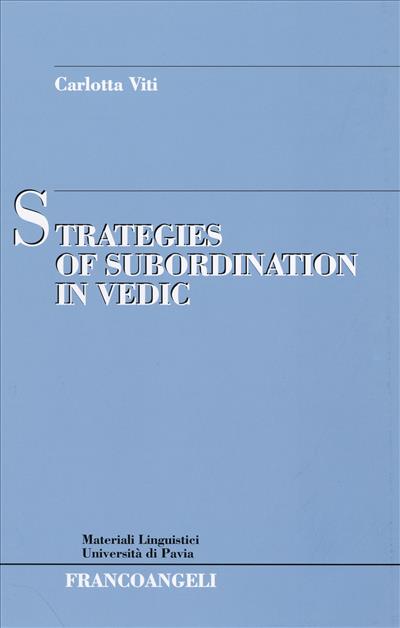
Strategies of subordination in Vedic
Pages: 304
ISBN: 9788846482020
Edition: 1a edizione 2007
Publisher code: 1095.57
Availability: Buona

Pages: 304
ISBN: 9788846482020
Edition: 1a edizione 2007
Publisher code: 1095.57
Availability: Buona